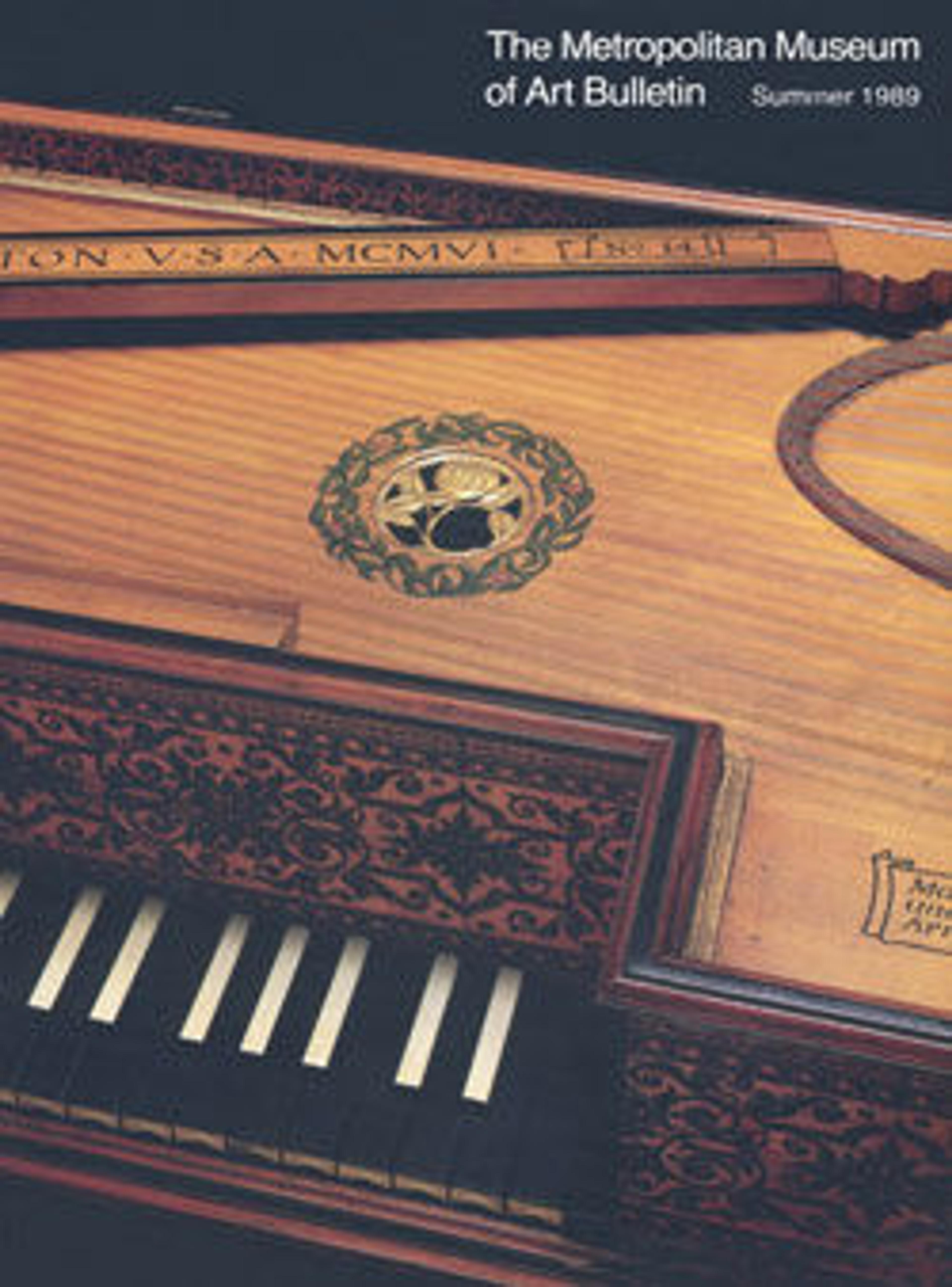Pipe Organ
The chamber organ is a moderately-sized piped organ. It typically has a single manual, a limited number of stops, and a limited pedalboard or no pedals at all. It is generally intended for use in small chapels, in homes, or other intimate rooms. As it is capable of long sustained tones, it is sometimes preferable to harpsichord as a continuo instrument in chamber ensembles.
Such instruments might also be used in small churches, like those found in small towns and villages throughouth the United States in the nineteenth century. Chamber organs were largely usurped by reed organs after the middle of the century.
Richard Ferris was born in New York City in 1818 and began an apprenticeship at the age of 12 with the builder Hall & Erben. In 1840, he established his own workshop, first located on Fulton Street in Manhattan. In 1857, he went into partnership with his half-brother L. U. Stuart and the firm became Richard Ferris & Co. Ferris died in 1858 and the business continued under his brother's name. (Biographical information from The Tracker, Newsletter of the Organ Historical Society, Winter, 1968)
Technical description: Rosewood case with cornice surmounted by carved ornaments, frontal framed cloth panel flanked by flats both of 3 dummy pipes with carved shades, single C-c4 ivory and ebony manual with plainwood fronts, flanked by 3 stopknobs on each side controlling 4 ranks (specification on separate card), key desk enclosed by curved fallboard holding music support, keybed supported by curved brackets flanking access panels, 13-note pedalboard in drawer at bottom left, coupled to bottom octave of manual by pulldowns, all pipes under expression controlled by swell pedal, wind supplied by separate pedal or by hand lever at right side, wind indicator in slot over keyboard, silver name plaque centered over keyboard. (Laurence Libin, 1987)
Such instruments might also be used in small churches, like those found in small towns and villages throughouth the United States in the nineteenth century. Chamber organs were largely usurped by reed organs after the middle of the century.
Richard Ferris was born in New York City in 1818 and began an apprenticeship at the age of 12 with the builder Hall & Erben. In 1840, he established his own workshop, first located on Fulton Street in Manhattan. In 1857, he went into partnership with his half-brother L. U. Stuart and the firm became Richard Ferris & Co. Ferris died in 1858 and the business continued under his brother's name. (Biographical information from The Tracker, Newsletter of the Organ Historical Society, Winter, 1968)
Technical description: Rosewood case with cornice surmounted by carved ornaments, frontal framed cloth panel flanked by flats both of 3 dummy pipes with carved shades, single C-c4 ivory and ebony manual with plainwood fronts, flanked by 3 stopknobs on each side controlling 4 ranks (specification on separate card), key desk enclosed by curved fallboard holding music support, keybed supported by curved brackets flanking access panels, 13-note pedalboard in drawer at bottom left, coupled to bottom octave of manual by pulldowns, all pipes under expression controlled by swell pedal, wind supplied by separate pedal or by hand lever at right side, wind indicator in slot over keyboard, silver name plaque centered over keyboard. (Laurence Libin, 1987)
Artwork Details
- Title: Pipe Organ
- Maker: Richard M. Ferris (American, 1818–1858 New York)
- Date: ca. 1850
- Geography: New York, New York, United States
- Culture: American
- Medium: Wood, metal, various materials
- Dimensions: H. 8 ft. 8 in. (264.2 cm); W. 58 in. (147.3 cm)
Bottom section: 119 cm (D); 97 cm (H); 142 cm (W)
Pipe Trays with smaller pipes are on 8 B: 60 cm H; 122 cm W; 61 cm D. - Classification: Aerophone-Organ
- Credit Line: Gift of Hans H. Schambach, 1986
- Object Number: 1986.197
- Curatorial Department: Musical Instruments
More Artwork
Research Resources
The Met provides unparalleled resources for research and welcomes an international community of students and scholars. The Met's Open Access API is where creators and researchers can connect to the The Met collection. Open Access data and public domain images are available for unrestricted commercial and noncommercial use without permission or fee.
To request images under copyright and other restrictions, please use this Image Request form.
Feedback
We continue to research and examine historical and cultural context for objects in The Met collection. If you have comments or questions about this object record, please contact us using the form below. The Museum looks forward to receiving your comments.
